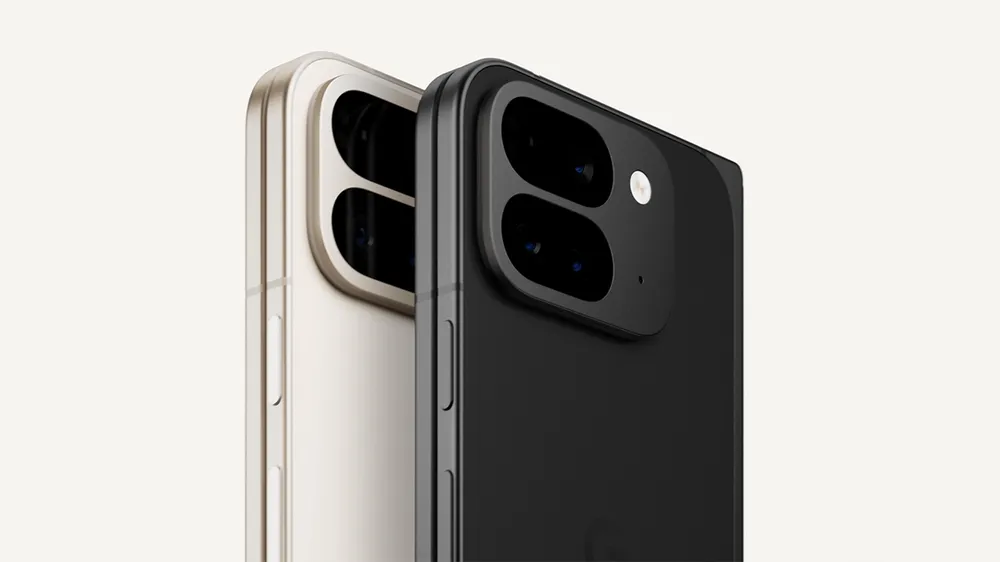Combining quality VR and affordability, the Meta Quest 2 is our favorite VR headset, but there are plenty of powerful alternatives that deliver an incredibly immersive experience. Jump to detailed looks at our picks for the best VR headsets, or just check the list below:
These are the Best VR Headsets for 2023:
The best VR headsets offer advanced tracking, six degrees of freedom (6DoF), and high resolutions. Apple is even throwing its hat in the ring with the Vision Pro, an astronomically priced, state-of-the-art VR headset expected to launch in 2024. Time will tell if Apple's VR headset makes the list, but to help you navigate the complicated market, we've found six solid options available now – and click here to find them in the UK.
The Best VR Headsets
1. Meta Quest 2
Best VR Headset
The Meta Quest 2 has everything you need in a budget-friendly VR headset. Now starting at $299, you get a massive library of immersive VR games like Beat Saber, along with streaming apps to make you feel like you’re in your own theater or virtual concert. It does all of this as a standalone device thanks to the powerful Qualcomm Snapdragon XR2 chip running the show, though you can connect it with a link cable to a PC for access to thousands of more VR experiences.
Once you put the Quest 2 on, you’ll experience crisp and smooth visuals thanks to its high-resolution displays—over 1080p per eye—and a 90-120Hz refresh rate. You can use the device just about anywhere since it’s cable-free, and the built-in camera warns you when you’re getting close to obstacles in your environment.
If you’re looking for an even more powerful—and significantly more expensive—VR headset, grab the Quest Pro, though it's designed for work, not gaming. Also, Meta has officially announced the Quest 3 will be out this fall. On offer is a next-gen Qualcomm chipset, better graphics performance, and a slimmer optic profile than the Quest 2, while the controllers should be more ergonomic. However, there’s a price hike, with it retailing for $499.99.
2. PlayStation VR2
Best VR Headset for Console Players
Console gamers rejoice as the PlayStation VR2 is here, and it’s great and ready to take your PS5 gaming experience to the next level. Coming in at $550, this VR headset costs more than the console itself, but all the features on offer, from the built-in tracking cameras and eye tracking to the two tactile Sense controllers with adaptive triggers and haptic feedback, make it worth the splurge. And unlike the original, the setup is simple, as you just plug in a single USB-C, do a bit of calibration, and you’re ready to go.
After you’ve got everything configured and the PlayStation VR2 resting comfortably on your head, you’ll enjoy 4K OLED panels offering HDR, a 120Hz refresh rate, and 110-degree FOV for some super smooth, gorgeous images to keep you immersed in the action. You’re truly getting PC-level VR in a headset with more features and better specs than many pricier PC VR headsets, like the Valve Index and HP Reverb G2. However, you, unfortunately, can’t play any of the expansive library of PC VR games or even a majority of the original PSVR games on this new headset, so you’re limited in what you can play currently.
3. HTC Vive XR Elite
Best Wireless PC VR
HTC was arguably the first to create a true standout VR headset, and their latest venture brings a standalone VR experience, similar to the Meta Quest 2, along with PC VR into one headset, the Vive XR Elite. If you want to play some of your PC VR games, this headset lets you do so wirelessly via a WiFi 6/6E connection. You can also hook it up directly to your gaming PC via USB-C, which means you can lose the swappable battery pack on the back of the device, making the headset lighter with more of a glasses-type vibe.
The Vive XR Elite operates at a smooth 90Hz, and with a 1,920 x 1,920 pixels per eye resolution, it almost eliminates any screen door effect. Headphones on the headset deliver spatial audio for greater immersion in the action. Of course, you also get full motion tracking with four cameras and a depth sensor, and it comes with two motion controllers. However, the high cost is somewhat hard to justify, given many of its feature match the Meta Quest 2, which is less than half the price.
4. Valve Index
Best High-End VR Headset
Hopefully you scored a solid gaming PC deal, so you can splurge on one of the best VR headsets around. The Valve Index has 1,440 x 1,600 per-eye resolution at a buttery smooth 120Hz. Expanded base stations enable you to map larger areas to play in, and the controllers have full finger tracking.
All that great functionality puts it ahead of the competition, but it’s also lot more expensive. Although you can mitigate some of that cost by using original Vive parts. Do this and you’ll be able to customize your setup, based on what you value most, or buy the full Valve Index to have the best visual VR experience available. It's perfect for titles like Half-Life: Alyx.
5. HTC Vive Pro 2
Best High-Resolution VR Headset
If ‘resolution’ is your buzzword of choice, the Vive Pro 2 is the one for you. With a resolution of 2,448 x 2,448 per eye, the HTC Vive Pro 2 will let you forget all about the screen-door effect, but you’ll need a powerful PC to run it.
It also has a 120-degree FOV and runs at 120Hz, meaning not only will your VR experiences LOOK good, but they’ll feel really good, too. The included Hi-Res Certified headphones mount to the headset to give you immersive audio, too.
6. HP Reverb G2
Best Windows Mixed Reality Headset
The HP Reverb G2 is a super comfy VR headset, with built-in headphones and the highest resolution on this list, with a total combined resolution of 4,320 x 2,160. A physical IPD slider will help you adjust the headset to match your eye width, which helps create a much cleaner, focused image. While it may run at just 90Hz, that is largely due to the intensive power needed to run at these resolutions.
With inside-out tracking, you also won’t need to set up external cameras or base stations, which means HP can charge much less than Valve for the Index and setup is a breeze. All of this combines to make a VR headset that lets your eyes, head, and mind relax as you engage with your favorite experiences.
Where to Get the Best VR Headset in the UK
What to look for in a VR Headset
Our above list is comprised of all of our favorite headsets, but this isn’t an exhaustive list, and more headsets are coming (including Meta's Quest 3). To determine which VR headset is right for you, keep these key things in mind:
Platform
The best VR headset is the one you can (and will) actually use. If you already have a beefy gaming PC, or are willing to spend serious cash to buy or build one, and you have space in a room large enough for room-scale VR, grab a SteamVR headset, which will give you the best experience, overall.
If you want the ability to play on a standalone system without a PC, even at the cost of lower graphical quality, or you want a flexible setup where that is an option – get the Meta Quest 2.
Games
If there are any exclusive games you want to play, that is another huge factor. Buying the excellent PSVR2 will get you access to a bunch of great exclusive PSVR games, but that doesn’t do you any good if you want to play Half-Life: Alyx.
Moreover, buying into the PSVR2 means you will be dependant on Sony to release more games and support it, while the PC-centric nature of the other platforms gives you more flexibility in how the headsets can be used.
SteamVR works on basically all of the PC-based headsets, which is great. Meta also has some exclusives, and although they may be playable on SteamVR devices with Revive, there is no guarantee.

Resolution & Refresh Rate
Performance is always incredibly important in gaming, but this can actually impact your health, too. While low resolutions can result in the “screen door effect,” which makes things look worse, poor frame rates and resolution can also cause eye strain and even motion sickness. While these normally occur at refresh rates lower than 90Hz, your mileage may vary. I
Another thing to keep in mind is that resolution isn’t everything. While, on paper, the Quest has higher resolution than the HTC Vive, that only reduces the screen door effect. The Quest still has lower quality graphics. That said, when comparing different models by the same manufacturer, you can safely pick the one with the highest resolution.
Stationary vs Room-Scale
The most immersive VR experience is the room-scale one. Being able to move about freely (called “six-degrees of freedom”), jump, crouch, and move around lets you truly experience the wonder of VR. Realistically, not everyone has room, or the ability, to participate in that.
If you have limited mobility, or don’t have room in your home, options that only track head movement instead of body movement is the way to go. This is perfectly suited towards watching movies, and similar activities.

Tracking System
Much like the difference between Station VS Room-Scale, the tracking system is also really important and it will influence how your headset feels to use.
The Meta Quest 2, HP Reverb G2, and more use inside-out tracking, which means the headset tracks your movement using cameras and sensors built into the headset. This means you don’t have to set up external cameras around your room, but it also means it’s less accurate.
If you are operating in a smaller space, or are a more casual user, inside-out tracking might be for you. If you want the best experience and have access to extra room, pick a headset with external tracking.

Wired vs Wireless
This originally wasn’t a choice at all. The first VR headsets had cables, but lately more and more wireless options are becoming available. Like many of the other choices on this list, this basically comes down to “freedom” vs “performance.”
While wireless sets mean you won’t trip over a cable, and you can wander more freely in a larger space, wires aren’t that obtrusive once you get used to them, and they will give your headset higher bandwidth, which generally means the best resolution and image quality. Having a wire also means you don’t have to worry about headset batteries running out.
If that is important to you, picked a wired set, although there are several very high quality sets (HTC Vive Pro 2, Meta Quest 2, etc.) that can be used both wired and wirelessly, which is a great way to go if you aren’t sure what you want.
VR has tons of promise, and not just in the gaming space. As the years go on, you may be able to attend concerts for all of your favorite bands, visit other planets in our solar system, and more, all from the comfort of your own home. Follow our guidelines, and we hope you’ll discover a whole new frontier of entertainment, education, and more.
VR Headset FAQ
What's the difference between VR and AR?
Virtual reality (VR) and augmented reality (AR) are terms often thrown around in the gaming world but have some distinct differences.
AR is a much more accessible technology, as almost anyone with a smartphone can use it. With AR, you get virtual features in the real world, often through your phone or headset’s camera. One of the best examples of an AR game is Pokemon Go, where you use your phone's camera to navigate through the real world, and virtual elements, such as Pokemon or PokeStops, appear. You can even interact with these elements through your device. But, of course, they are not actually physically in front of you. Augmented reality is just adding to your current surroundings.
VR uses some aspects of AR but takes things to another level by eliminating the real-world setting. Instead, your entire world is computer generated, so it doesn’t matter where you’re actually physically located. All of your surroundings are replaced, and what you see is controlled by a computer system. Therefore, headsets block out the real world, blindfolding you for a fully immersive experience. Some great VR game examples are Half-Life: Alyx, which places you in a dystopian sci-fi universe, or the PSVR 2 version of Gran Turismo 7, where you’ll be residing in the cockpit of a car.
What's a good Meta (Oculus) Quest 2 alternative?
The Meta Quest 2 appears to be in a league of its own with its standalone functionality, impressive motion tracking, and budget-friendly price. That means finding a suitable alternative is a challenge.
Of course, you could go with the Meta’s Quest Pro, but it’s pricey and not even meant to play games. The HTC Vive XR Elite offers similar specs to the Quest 2 and even lets you play PC VR games wirelessly over a WiFi 6/6E. However, the astronomical $1,000 price is hard to justify when you get very few extras and can snag the Quest 2 for $300.
That leads us to our best Meta Quest 2 alternative: the Pico 4. The Pico 4 and Quest 2 have a lot in common, as they’re both standalone wireless headsets, run on the same Snapdragon XR2 processor, and support PC VR. A longer battery life, lighter design, more clarity, and a wider field of view even give the Pico 4 a slight edge over the Quest 2. But as great as the Pico 4 sounds, it has limited availability in the US, sometimes making the reasonably priced headset more expensive stateside. If you decide to grab the Pico 4, be sure to do research and shop around before purchasing.
Brian Barnett writes reviews, wiki guides, deals posts, features, and more for IGN. You can get your fix of his antics on Twitter (@Ribnax) or check out his show on Twitch (The Platformers).






